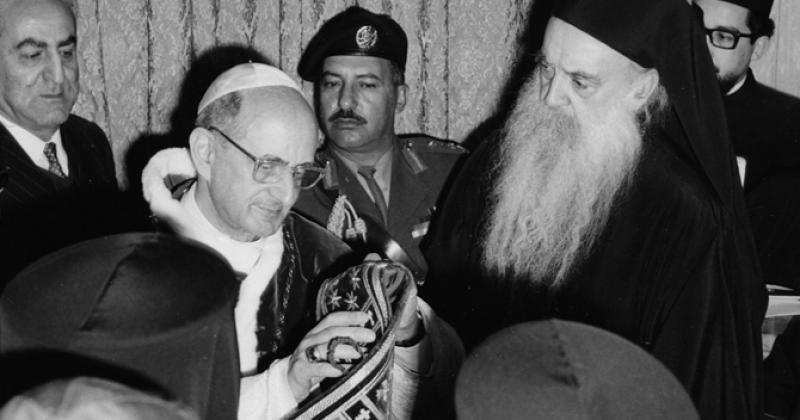Fifty years ago on January4, 1964, Paul VI's visit to the Holy Land began, and then concluded on the evening of the Epiphany with the embrace and lights of one million Romans' enthusiastic and moving welcome home of their bishop. The visit lasted a few short hours but it changed the face of the papacy. Since then, the successors of the Apostle Peter have resumed all over the world the path that the fisherman from Galilee and the first followers of the Teacher of Nazareth had obscurely taken, trusting only in his word.
The idea goes back to the very beginning of his pontificate, during the quiet work of the first summer he spent at Castel Gandolfo, and which can be found in a note from September 21 explaining the itinerary as “quite quick” and with a “simple, pious, penitent and loving nature”. In order to prepare, two of the Pope's close colleagues went undercover to the Near East. They also travelled to Damascus but found it would be impossible for Paul VI – who wanted to honour the memory of the Apostle whose name he had chosen – to stop there.
It was the Pontiff himself who made the surprising and truly sensational announcement to the bishops at the conclusion of the work of the second session of the Council on December 4. “We will see that blessed land where Peter left and where no successor has returned”, Montini said. And one month later the unthinkable happened. In 57 hours, Paul VI went from Amman, Jordan to Jerusalem, then Nazareth and the Lake of Tiberias. He returned to the holy city, went to Bethlehem and then left from Amman.
In reading the texts, news and comments a half century later one can perceive the originality of a journey that only a few months before would have seemed impossible and interpretations by historians - focusing on the political context and the dynamics of the Council – do not seem to have yet grasped the most authentic and revealing implications. These run in contrast, however, to the eyewitnesses, journalists and writers who looked to both protagonists.
It is in fact in the improvised words such as “in God's presence” and the actions of Paul VI and of Athenagoras, the Patriarch of Constantinople, who he met in Jerusalem after centuries of division, that hint at the meaning of this real “return to the beginnings of the Gospel” that opens to a future not yet accomplished. It was a journey that the Pope of Rome defined as “a blow of a plough that turns over hardened and unmoving soil”.
